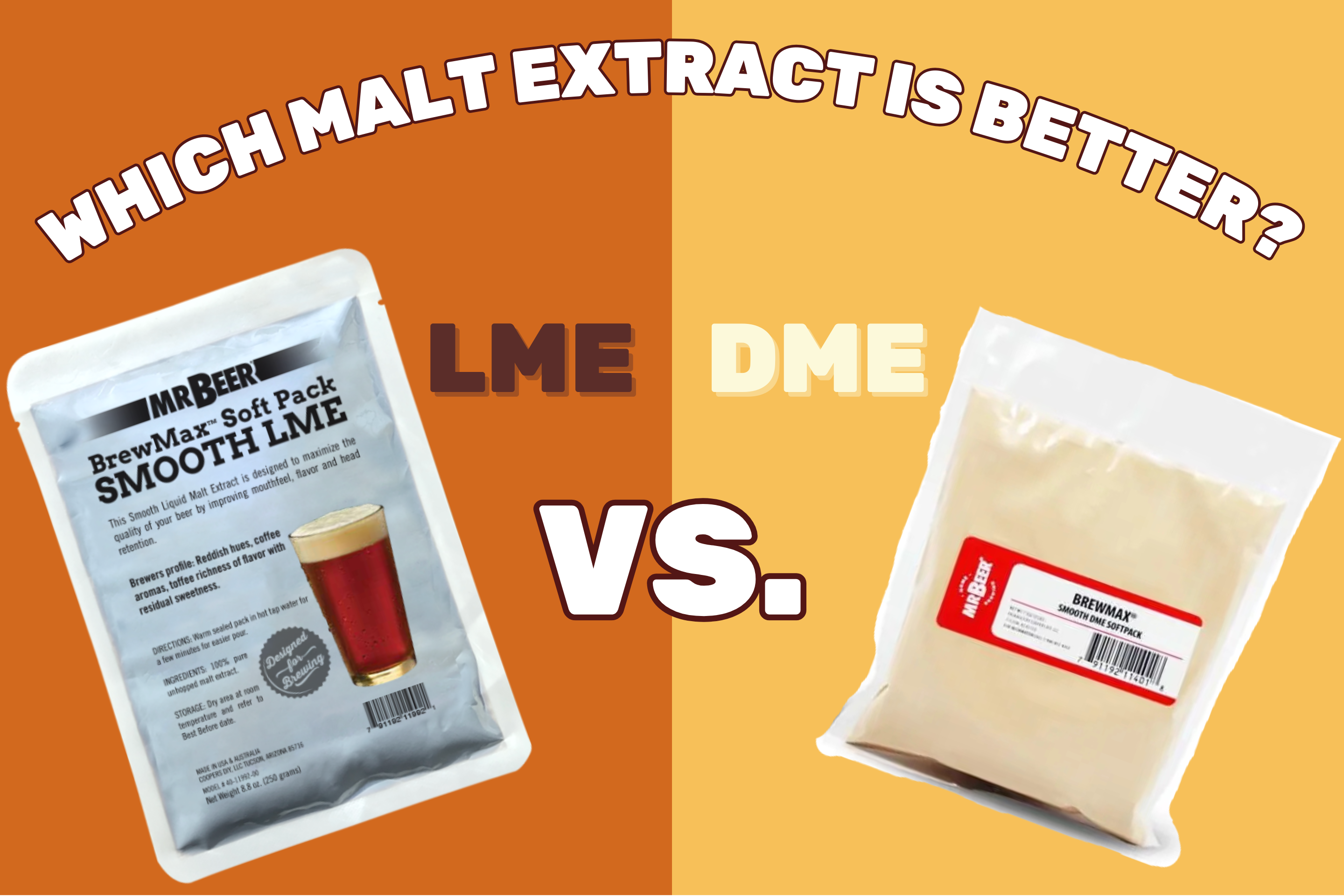LME vs. DME: Which One Should You Use for Your Homebrew?

Breaking Down the Differences Between Liquid and Dry Malt Extract—So You Can Brew Your Best Beer Yet!
When it comes to homebrewing, malt extract is a staple ingredient, offering an easy way to add fermentable sugars, flavor, and body to beer. But when choosing between Liquid Malt Extract (LME) and Dry Malt Extract (DME), which is the better option? While both serve the same purpose, there are some key differences that can impact your final brew. Let's Break it down.
What is Malt Extract?
Before we get into LME vs. DME, let's talk about what malt extract actually is. It's made from malted barley that has been mashed to convert starches into fermentable sugars. Unlike Mr. Beer's standard hopped malt extracts (HME), both LME and DME are unhopped, meaning they're purely malt-based and won't contribute any bitterness. Their job? Boost alcohol, enhance body, modify color and add flavor.
Liquid Malt Extract (LME):
LME is a thick, molasses-like syrup that's about 20% water. It's known for being easy to work with, making it a favorite for homebrewers who want a straightforward, mess-free experience.
Here's why you might want to go with LME:
- Fuller Flavor: Many brewers find LME gives a richer, maltier taste.
- Easy to use: Just pour it in, stir, and you're good to go.
- Darkens over time: This stuff will naturally get darker the longer it sits, which can impact the color of your beer.
- Shorter shelf life: While LME lasts up to two years when stored properly (cool, dark, and airtight), if not stored properly, you might end up with some unwanted flavors.
Dry Malt Extract (DME):
DME is essentially LME with almost all moisture removed, leaving behind a fine powder with about 2% water content.
It offers some advantages, such as:
- Longer shelf life: Less moisture means DME can last much longer without quality or flavor profiles changing.
- Lighter color impact: It won't darken your beer as much as LME, making it a solid choice for light styles.
- Easier to measure: Since it's a powder, you can measure out exactly what you need without the sticky mess.
- Clumps up fast: The downside? DME is hygroscopic, meaning it sucks up moisture like a sponge. If not stored in an airtight container, it will turn into a sticky, clumpy mess.
Which One Should You Use?
Honestly? It depends on your brew and setup. Here's a quick cheat sheet:
- Use LME if you want a richer malt profile and don't mind a darker beer.
- Use DME if you want a longer shelf life, precise measurements, and less color impact
Both can be used interchangeably, but keep in mind that DME is more concentrated—you'll need about 20% less DME by weight compared to LME.
The Bottom Line
At the end of the day, both LME and DME can make high-quality beer, there's no "right" or "wrong" choice. Many award-winning homebrews have been made with malt extract! While some assume all grain brewing is superior, however, when done correctly, extract brewing can yield pretty exceptional results. If you really want to dial in your preference, try brewing small test batches with both and see what works best for your style.
The most important thing? Try to store your extract properly. That’s what makes the difference between a great brew and a mediocre one. Now, grab a cold one and get brewing!
If you're looking to take your brewing to the next level, don’t miss out on our 10% off Specialty Grain Recipe Sale! Stock up on all the ingredients you need to brew your best beer yet.
